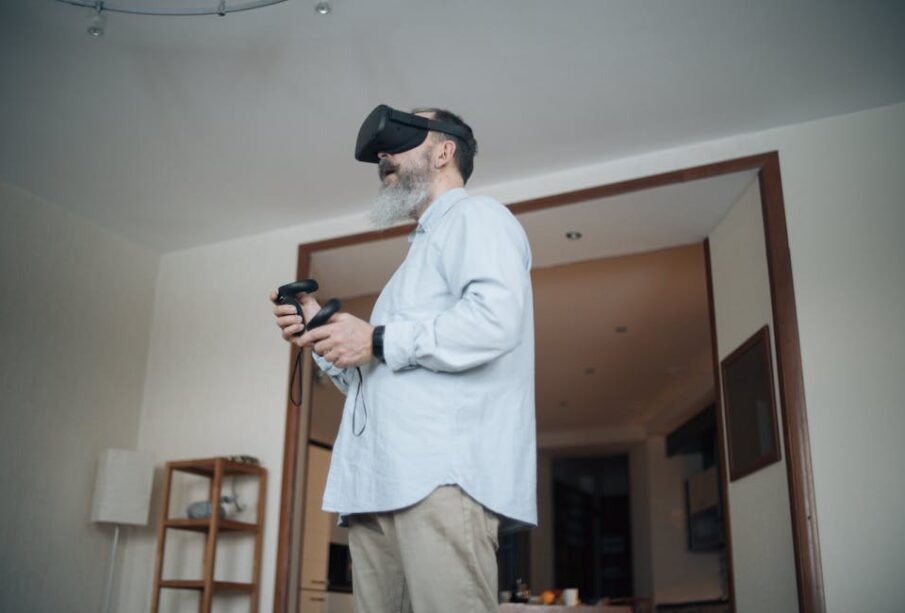How Augmented Reality Is Changing Online Shopping

Online shopping has transformed the way we buy goods, but limitations persist. Imagine being able to virtually try on clothes, visualize furniture in your living room, or inspect a product’s intricate details without ever leaving your home. Augmented Reality (AR) is bridging this gap, offering a more immersive and interactive online shopping experience that’s changing the retail landscape. This technology is not just a fleeting trend; it’s a powerful force driving significant improvements in customer engagement, product visualization, and ultimately, sales.
Immersive Product Visualization
One of the biggest challenges of online shopping is the lack of tactile experience. AR applications are overcoming this hurdle by allowing customers to virtually interact with products in a realistic way. Imagine holding a virtual pair of glasses in your living room to see how they look with your existing wardrobe. This interactive visualization dramatically reduces uncertainty and increases confidence in purchase decisions. AR apps are now capable of showcasing products from multiple angles, highlighting intricate details, and providing 360-degree views. This level of detail empowers customers to make informed choices, reducing the likelihood of returns and increasing satisfaction.
Virtual Try-Ons and Fittings
The fashion industry is particularly benefiting from AR technology. Virtual try-on applications allow customers to virtually place clothing items on themselves using their smartphones or tablets. This feature is revolutionizing the fashion shopping experience. No more awkwardly trying on clothes that may not fit. Users can quickly and easily evaluate different styles and sizes, increasing the likelihood of making a purchase. This technology is expanding beyond clothing; AR try-on is being used for accessories, shoes, and even makeup, offering a more personalized and engaging shopping experience.
Interactive Product Demonstrations
Beyond apparel, AR is impacting other sectors. Imagine seeing how a piece of furniture fits in your living room before committing to a purchase. AR applications allow customers to virtually place furniture, decor, and other home goods in their spaces, providing a realistic preview of how the item will look in their environment. This interactive demonstration not only enhances the shopping experience but also empowers customers to visualize the product in their lives, fostering a deeper connection and increasing purchase likelihood. This is particularly useful for products with a strong visual impact.
Enhanced Customer Engagement and Brand Loyalty
AR-powered online shopping experiences go beyond simple product visualization. Interactive games, quizzes, and personalized recommendations can enhance customer engagement and drive brand loyalty. For instance, a furniture retailer could develop an AR app that allows customers to design their dream living room, complete with custom color palettes and furniture arrangements. This level of personalization fosters a deeper connection with the brand, making customers more likely to return for future purchases.
Key Advantages of AR in Online Shopping
- Improved Decision Making: AR allows customers to visualize products in their environment, reducing uncertainty and increasing confidence.
- Increased Engagement: Interactive features and personalized experiences enhance user engagement and brand loyalty.
- Reduced Returns: Virtual try-ons and product visualizations help customers make informed decisions, leading to a lower rate of returns.
- Enhanced Customer Experience: AR transforms online shopping from a passive browsing experience to an interactive and engaging adventure.
Challenges and Future Trends
While AR is rapidly transforming online shopping, challenges remain. Ensuring accurate product representation and maintaining seamless integration across different devices are crucial considerations. Moreover, the initial cost of implementing AR solutions can be a barrier for some businesses. However, as technology advances and costs decrease, we can expect to see even more innovative applications of AR in the online shopping arena. The future likely holds more sophisticated AR experiences, integrating with virtual reality (VR) to create truly immersive shopping environments.
Conclusion
Augmented Reality is revolutionizing online shopping by offering a more immersive and interactive experience for customers. From virtual try-ons and product visualizations to interactive demonstrations and personalized recommendations, AR is empowering consumers to make informed decisions and fostering deeper connections with brands. As technology continues to evolve, we can anticipate even more innovative and engaging AR applications transforming the way we shop online, ultimately shaping the future of retail. This trend will continue to reshape the online shopping landscape and bring the joy of in-store experiences directly to consumers’ homes.














